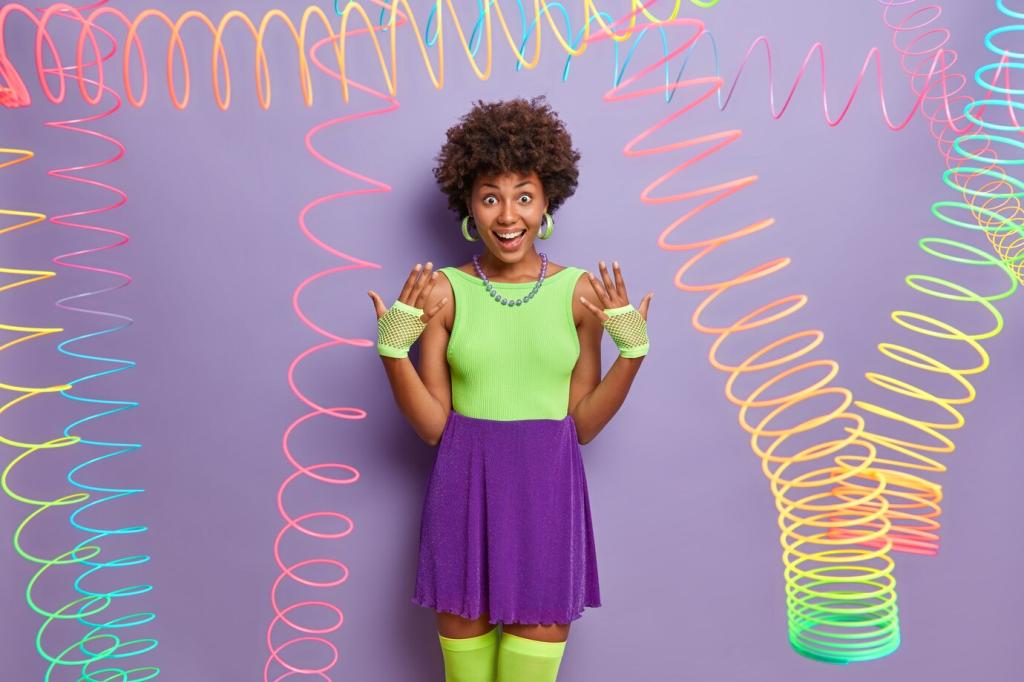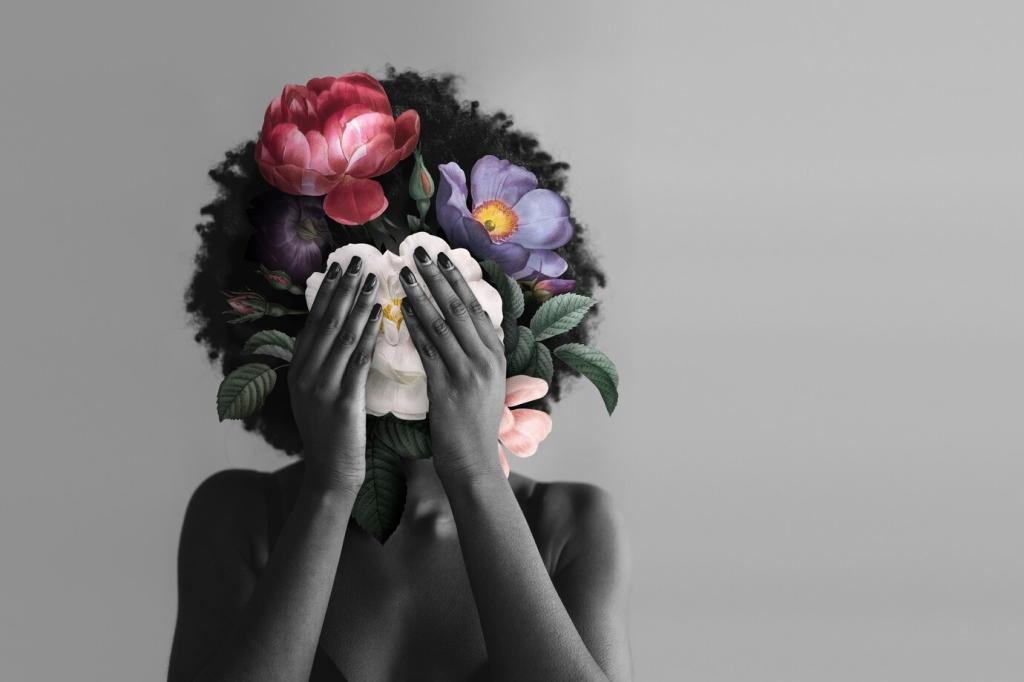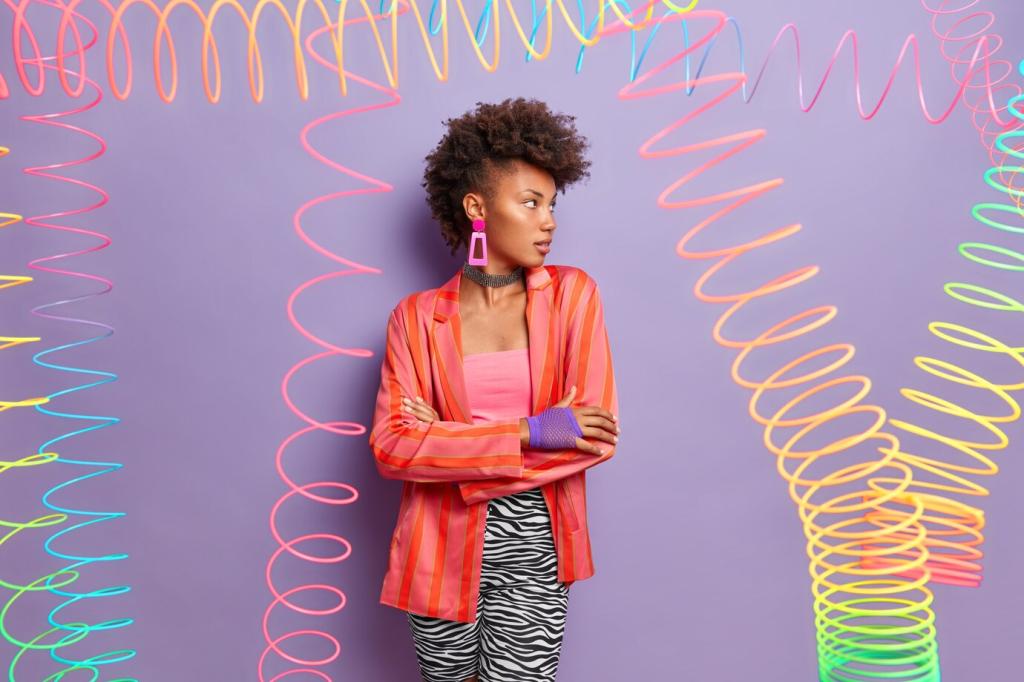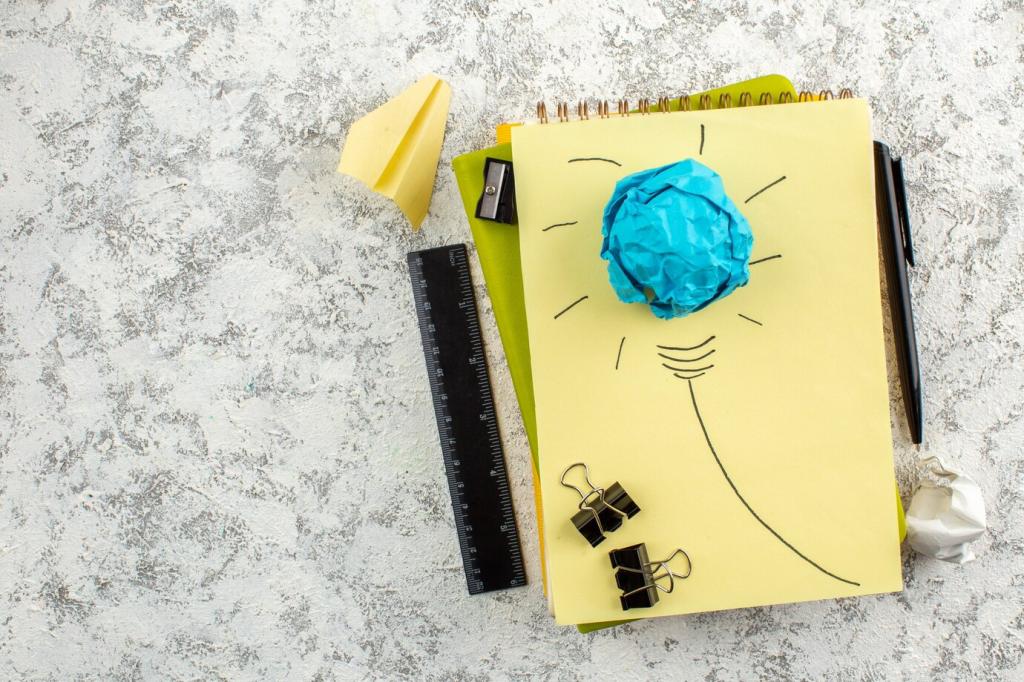Mindfulness Techniques for Enhancing Creativity
Cultivating creativity can be challenging in our fast-paced world, where distractions and stress often hinder our ability to think outside the box. Mindfulness offers a powerful antidote, helping individuals tap into their creative potential by fostering focus, presence, and open-mindedness. On this page, discover how various mindfulness practices can awaken your imagination, promote innovative thinking, and sustain creative flow. Each section explores a unique aspect of the intersection between mindfulness and creativity, providing in-depth insights into techniques that have been shown to enhance creative output and mental clarity.
The Science Behind Mindfulness and Creativity
Scientific studies have shown a strong link between regular mindfulness practice and increased creative thinking. The brain’s default mode network, responsible for daydreaming and spontaneous thought, is activated during mindfulness, leading to enhanced idea generation. Mindfulness helps regulate emotional responses, reducing anxiety and self-doubt that often stifle creative expression. By quieting the inner critic and fostering a non-judgmental awareness, mindfulness cultivates a mental environment where imaginative ideas are more likely to flourish. This gentle focus improves cognitive flexibility, allowing for more original thinking and novel problem-solving strategies. Understanding these neurological mechanisms lays the groundwork for harnessing mindfulness to boost creative output in both artistic and professional settings.
How Mindfulness Enhances Cognitive Flexibility
Cognitive flexibility refers to the ability to shift thinking and adapt to new situations or concepts—a crucial component of creativity. Mindfulness practices train the mind to remain open and observant, breaking habitual patterns that can limit creative thought. When engaged in mindfulness, individuals become more comfortable with ambiguity and uncertainty, both of which are inherent to the creative process. This mental flexibility supports divergent thinking, or the generation of multiple solutions to a problem. Over time, practitioners notice increased willingness to experiment, take risks, and view setbacks as opportunities for novel approaches, all of which significantly bolster creativity.
The Power of Focus in Creative Endeavours
Mindful Breathing to Sharpen Concentration
Mindful breathing is a foundational practice that cultivates focus, which is crucial for creative work. By anchoring attention on the gentle rhythm of the breath, creators learn to bring wandering thoughts back to the task at hand. This simple act of noticing the inhale and exhale creates a pause, clearing mental clutter and preparing the mind for deeper exploration. Over time, this practice habituates a state of calm alertness, making it easier to enter periods of absorption where creative breakthroughs often occur. Mindful breathing can be practiced anywhere and serves as a reliable technique for regaining focus whenever creative momentum dips.
Single-Tasking as a Creative Discipline
In a world obsessed with multitasking, single-tasking stands out as a powerful tool for creative focus. Mindfulness teaches individuals to concentrate fully on one project or idea at a time. Immersing oneself in a single creative endeavor minimizes the cognitive load and reduces stress, allowing for greater innovation and depth. This focused attention may reveal details and possibilities previously overlooked. Furthermore, committing to one task at a time cultivates patience and persistence—two qualities that support the complex process of bringing creative visions to life.
Cultivating the Creative “Flow” State
The “flow” state, identified by psychologist Mihaly Csikszentmihalyi, describes those periods when creators are so engrossed in their work that time seems to disappear. Mindfulness meditation is a gateway to achieving this optimal state. Regular practice enhances the ability to tune out distractions and remain fully present, which are conditions ripe for flow. Mindfulness also decreases activity in the brain regions associated with self-monitoring, freeing individuals from overthinking and self-editing as they create. This unbroken focus yields not only more productive creative sessions but also a greater sense of fulfillment and joy in the act of creating.
Accepting All Ideas Without Filtering
Every creative process is accompanied by a stream of ideas, ranging from the practical to the far-fetched. Mindfulness practices train individuals to recognize and accept all thoughts as they arise, suspending judgment during the initial stages of idea generation. This acceptance fosters a creative environment where even the most unconventional notions are given space to grow. Instead of dismissing “bad” ideas, creators learn to observe them with curiosity, often leading to unique insights or unexpected breakthroughs. Over time, this practice reduces self-censorship and builds the courage required to venture beyond safe, conventional solutions.
The Role of Self-Compassion in Creativity
Many creative individuals struggle with self-critique and fear of failure, which can stifle innovation. Mindfulness encourages self-compassion—treating oneself with the same kindness and understanding one would offer a friend. This supportive inner dialogue reduces the sting of mistakes and encourages continued experimentation. With self-compassion, the emotional stakes of creative work are lowered, freeing artists and thinkers to take risks and embrace new challenges. Overcoming harsh self-judgment is often the key to unlocking deeper creativity and sustained creative engagement.
Transforming Criticism Into Constructive Insight
Mindfulness alters the way individuals receive and process criticism, turning it from a source of discouragement into an opportunity for growth. Through mindful awareness, creators can separate their self-worth from external feedback and examine critiques objectively. This shift allows for healthier engagement with feedback, seeing it as valuable information rather than a personal attack. Ultimately, developing a non-judgmental attitude makes it easier to refine and adapt creative ideas, leading to more resilient, innovative outcomes.
Observation and Sensory Awareness as Creative Fuel
Enhancing Observation Skills Through Mindfulness
Mindful observation sharpens one’s ability to notice subtle details often missed in daily life. This heightened awareness can act as a springboard for creative ideas, providing fresh perspectives and unique material. By practicing present-moment attention during ordinary activities—such as walking, eating, or listening—creators learn to draw inspiration from the richness of everyday experience. These observations can inform more realistic characters, settings, or imagery in creative work. This process also builds patience and appreciation for nuance, which translates into more thoughtful, layered creative projects.
Sensory Meditation for Deeper Inspiration
Sensory meditation involves focusing attention on one or more senses to fully experience the present moment. By tuning into the smell of fresh rain, the texture of fabric, or the complex flavors of a meal, practitioners invigorate their creative muscles. This deep sensory engagement provides raw material for painting, writing, music composition, and other artistic pursuits. Over time, sensory meditation heightens emotional resonance and empathy—qualities that make creative work more engaging and relatable. Returning regularly to the senses helps creators stay grounded and inspired, even during creative droughts.
Translating Sensory Experiences Into Art
The transition from mindful observation to artistic expression can be seamless with practice. Mindfulness techniques teach individuals to internalize vivid impressions and translate them into their chosen creative medium. Whether it’s capturing the play of light in a photograph or infusing a character with the emotion felt during a meaningful encounter, mindfulness guides this process with authenticity and depth. Documenting sensory experiences in journals or sketches further refines creative skills, pulling content directly from immersive, mindful states. The more attuned one is to their senses, the richer and more evocative their creative output becomes.

The Creative Benefits of Mindful Walking
Mindful walking combines gentle movement with focused awareness, stimulating both body and mind. As each step becomes an object of attention, creative blocks often begin to dissolve, replaced by a flow of intuitive thought. The changing environment provides fresh sensory input, and the rhythmic cadence of walking supports meditative reflection. Ideas that remain elusive at a desk may surface effortlessly during a tranquil walk. Regular mindful walking sessions can become a nurturing ritual, offering space for incubation and insight, which are essential for sustaining long-term creative endeavors.

Yoga for Releasing Emotional and Physical Tension
Yoga, practiced mindfully, is an effective way to release emotional and physical tension that can inhibit creative work. The gentle stretching and conscious breathing deepen the mind-body connection, often unlocking subconscious ideas as muscles relax. Many artists and writers find creative renewal following a yoga session, as the practice clears mental fog and improves mood. Yoga also encourages mindfulness off the mat, promoting a more receptive and responsive approach to daily life and creativity. With continued practice, yoga creates resilience and flexibility, characteristics that underpin creativity’s inherent unpredictability.

Creative Exploration through Freeform Movement
Freeform movement, such as dance or intuitive stretching, offers a playful way to bypass intellectual barriers and engage with creativity on a somatic level. Mindfulness invites practitioners to move without a predetermined outcome, tuning into sensations and emotional cues that arise spontaneously. This uninhibited movement serves as a wellspring for original ideas, allowing the body to become an instrument of self-expression. By moving freely, individuals tap into subconscious material, translating raw emotion and physicality into artistic forms. This embodied creativity often results in breakthroughs that structured thinking alone cannot access.

The Process of Stream-of-Consciousness Writing
Stream-of-consciousness writing is a mindfulness-based journaling technique that invites individuals to write continuously without filtering or editing. This practice allows thoughts and ideas to surface organically, capturing originality and authenticity that might otherwise be lost through self-censorship. By suspending judgment, writers can unearth hidden connections and new perspectives, both of which are valuable for creative problem-solving. Stream-of-consciousness writing is particularly useful during periods of creative block, as it encourages the free flow of ideas and reduces performance pressure. Practiced regularly, it becomes a powerful tool for unlocking and nurturing creativity.
Using Mindful Prompts for Creative Expansion
Mindful journaling is enhanced by prompts that encourage present-moment reflection and open-ended exploration. Questions such as “What am I noticing right now?” or “What do I feel drawn to create today?” invite curiosity and self-inquiry. Prompts serve as gentle guides, steering attention away from external distractions and into the wellspring of personal experience. Responding mindfully to prompts helps to break habitual thinking patterns and encourages new ways of seeing and interpreting the world. Over time, this approach expands creative repertoire and deepens awareness of one’s unique artistic voice.
Reflective Journaling to Overcome Creative Challenges
Facing creative setbacks is inevitable, but mindful journaling can transform these challenges into opportunities for growth. By consciously reflecting on obstacles, fears, or moments of frustration, individuals develop greater resilience and adaptability. Writing about difficulties without judgment provides emotional release and fosters problem-solving skills. This process also encourages the recognition of progress made, reinforcing a sense of accomplishment even during challenging times. Overcoming creative challenges through mindful journaling builds confidence and creates a supportive inner environment conducive to sustained creative effort.
Group Mindfulness Practices for Collective Creativity

Guided mindfulness meditation in a group setting establishes a shared sense of calm and presence. This collective stillness creates psychological safety, encouraging team members to contribute their ideas without fear of judgment. Groups that meditate together often report improved communication, reduced conflict, and heightened mutual respect. The benefits extend beyond the session, enhancing creativity in group projects and brainstorming sessions. Guided group meditations can be tailored to focus specifically on creative challenges, uniting members in pursuit of innovative solutions.
